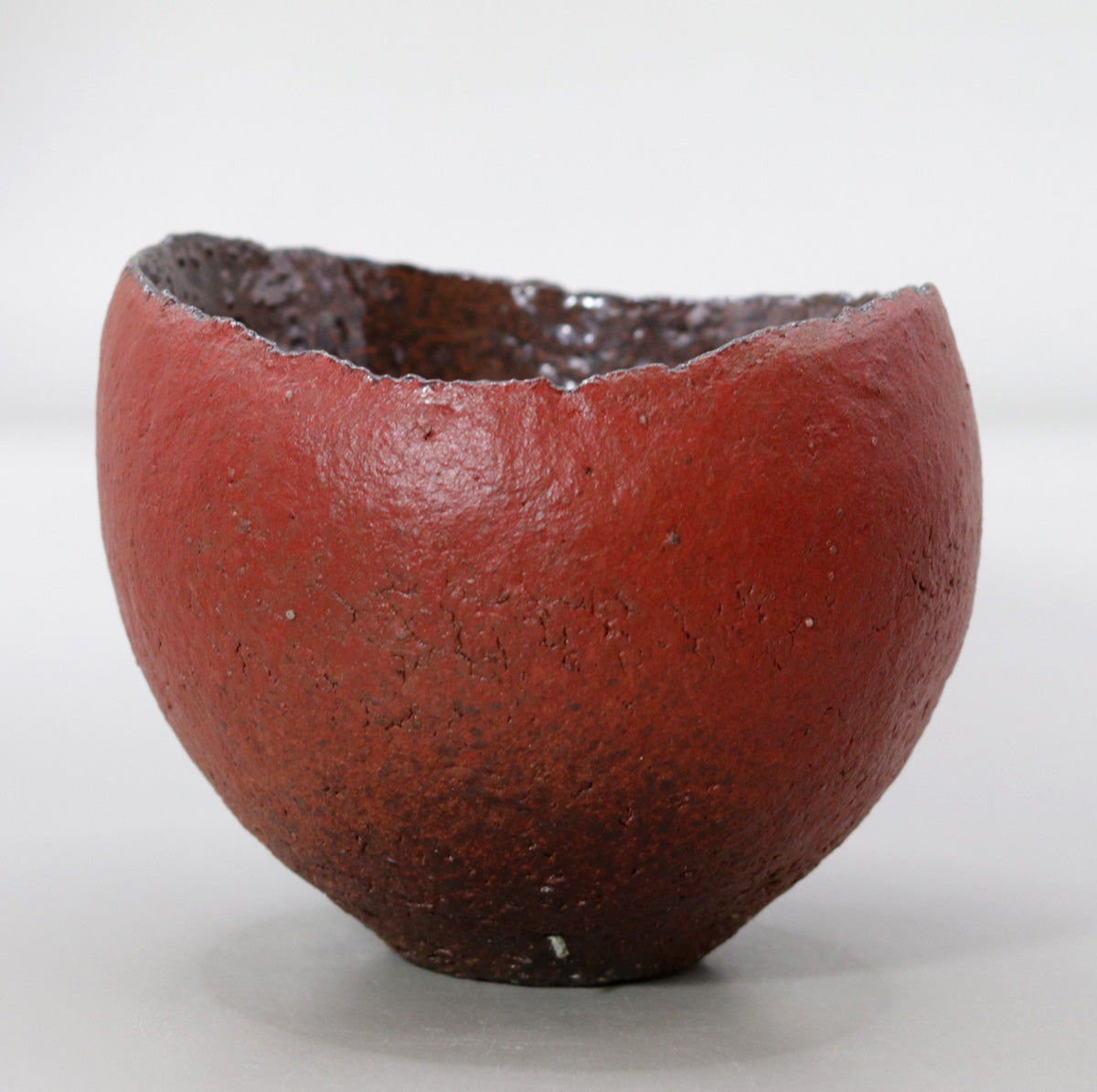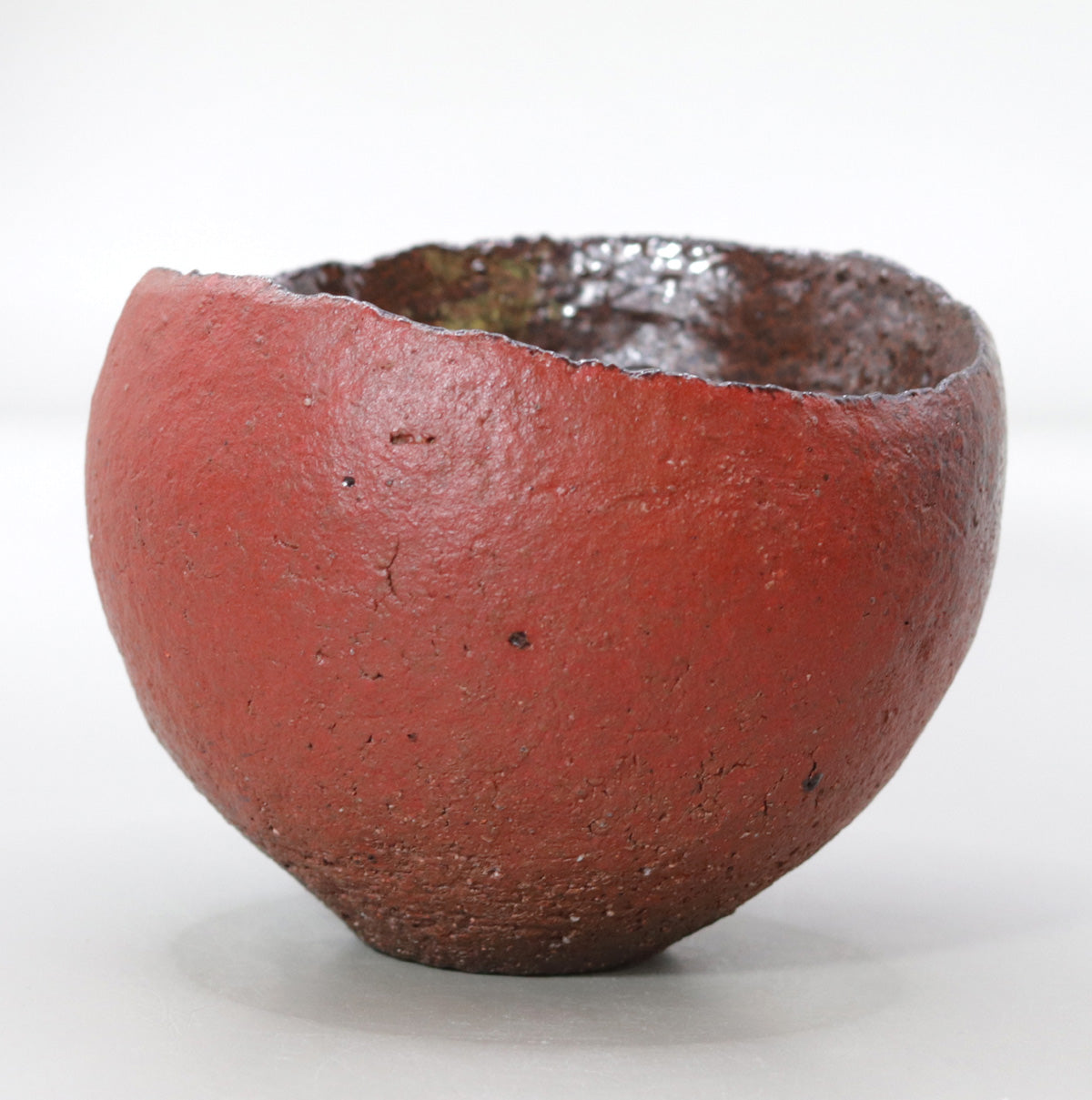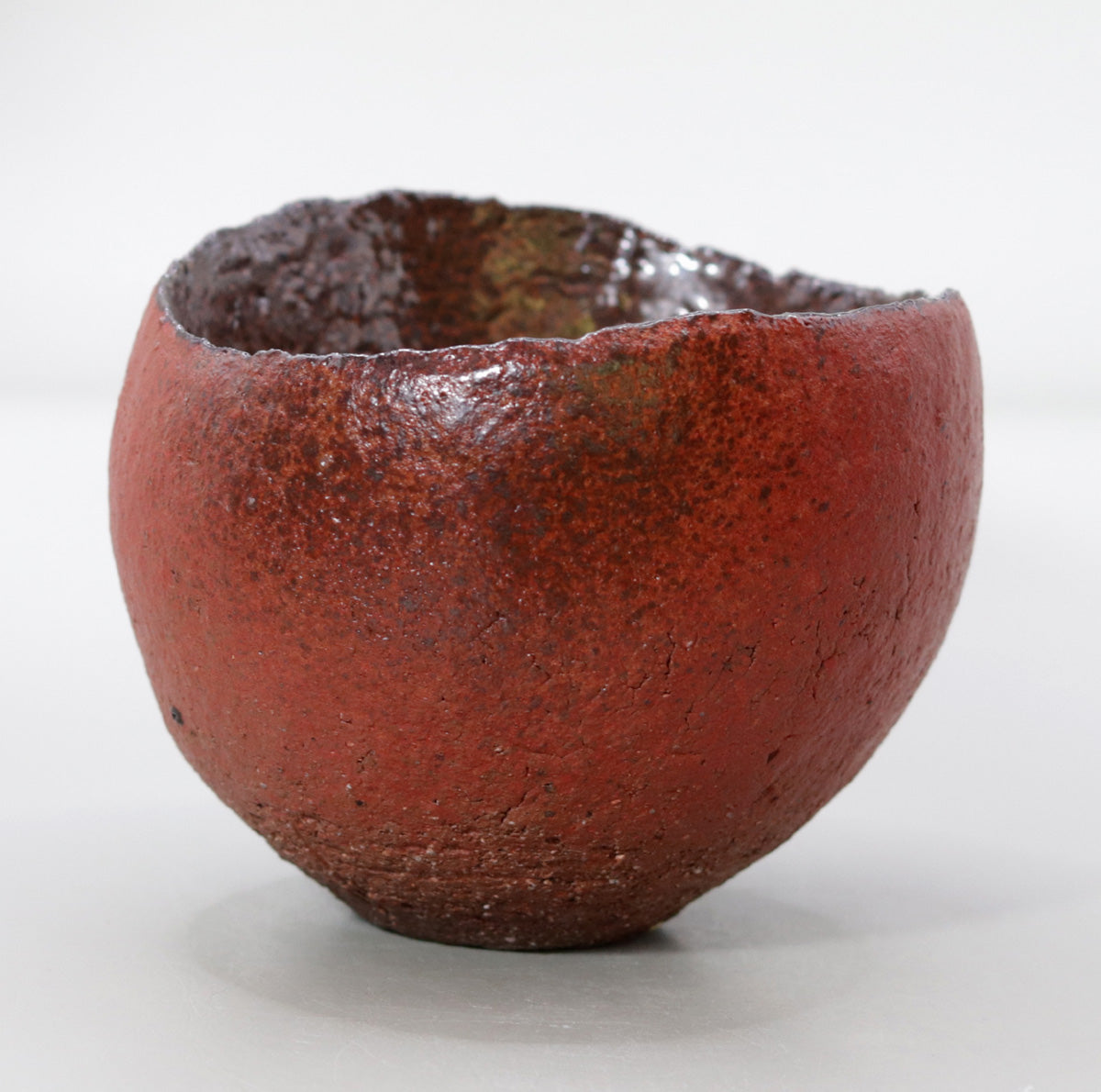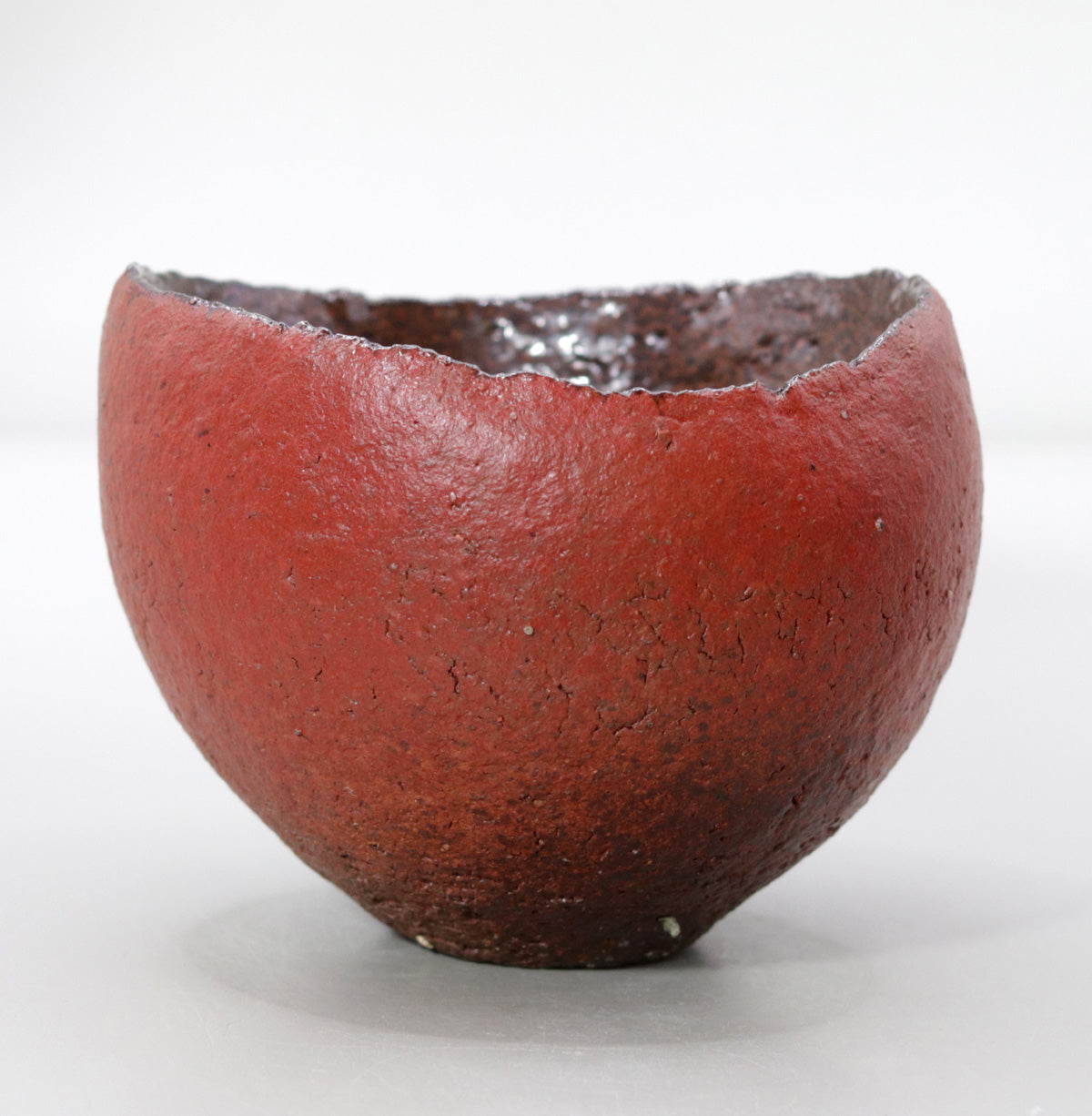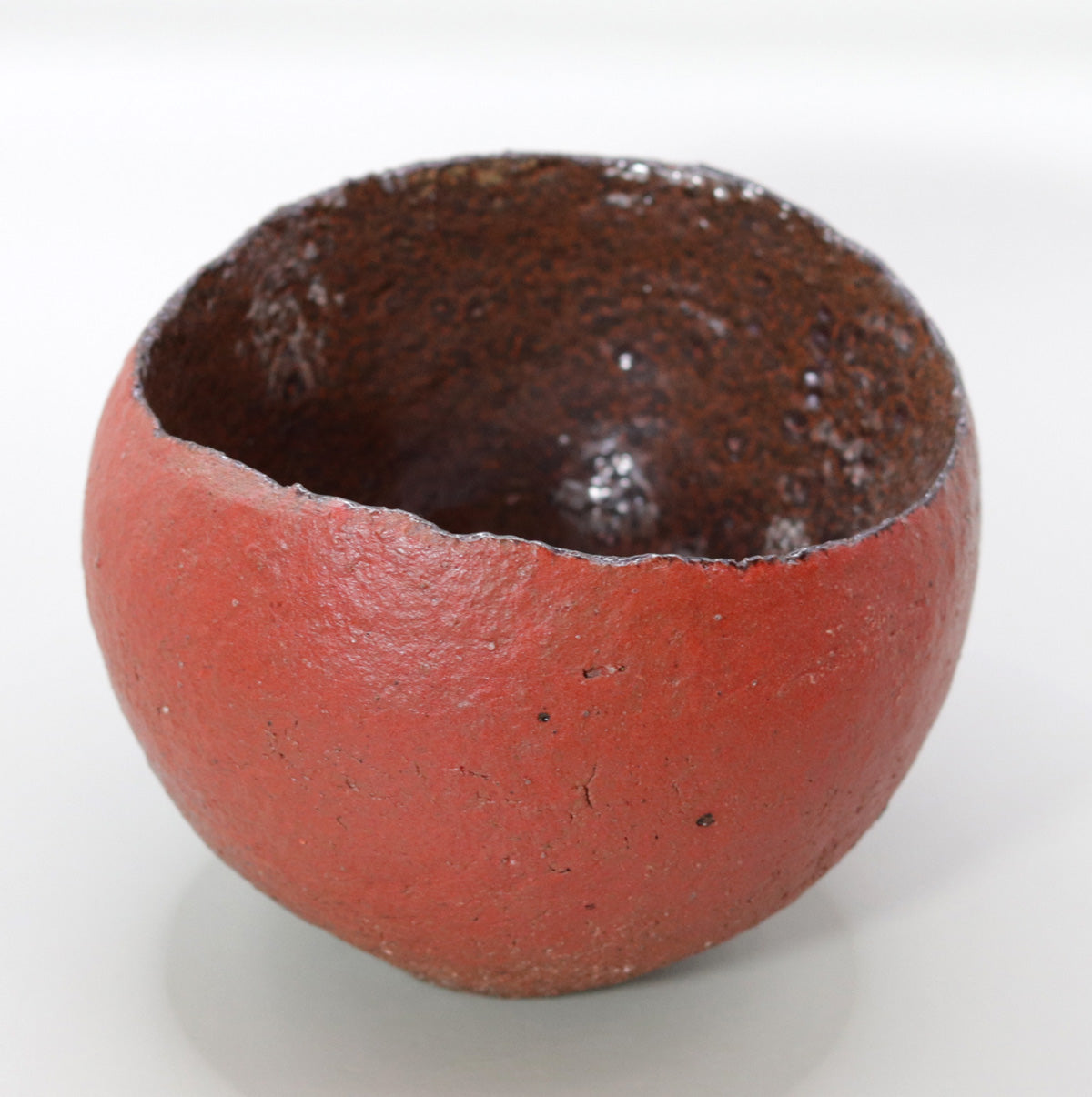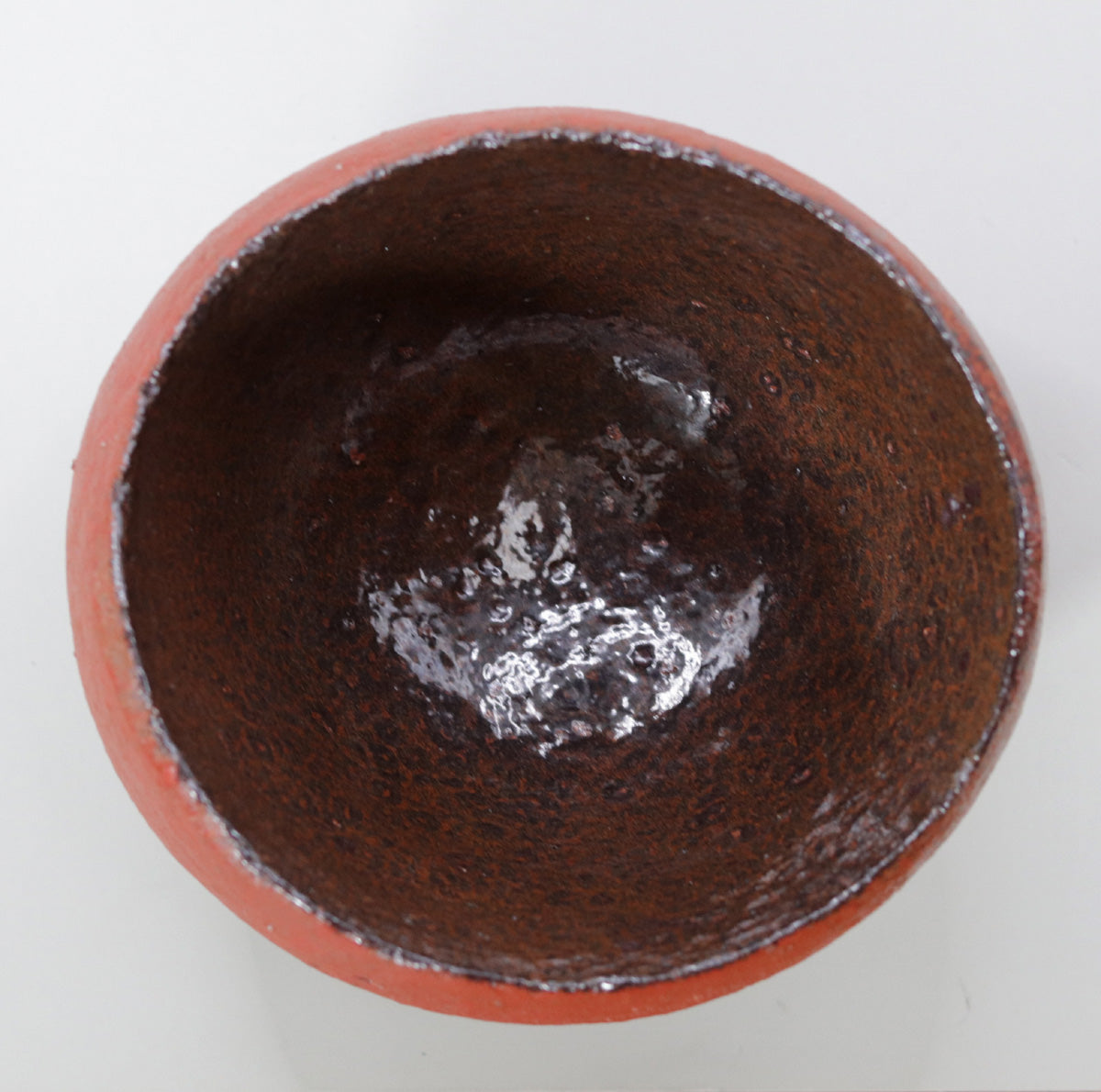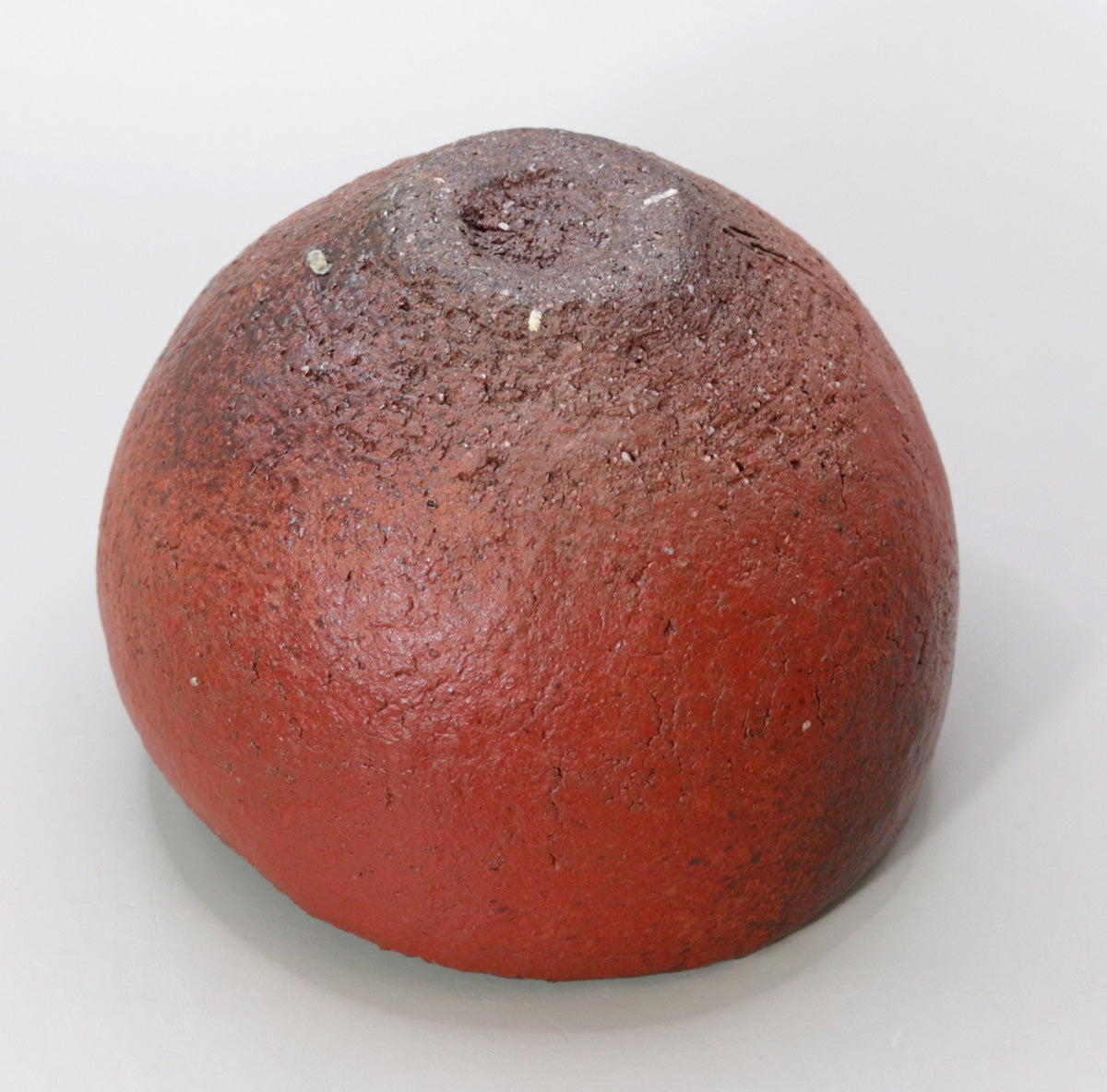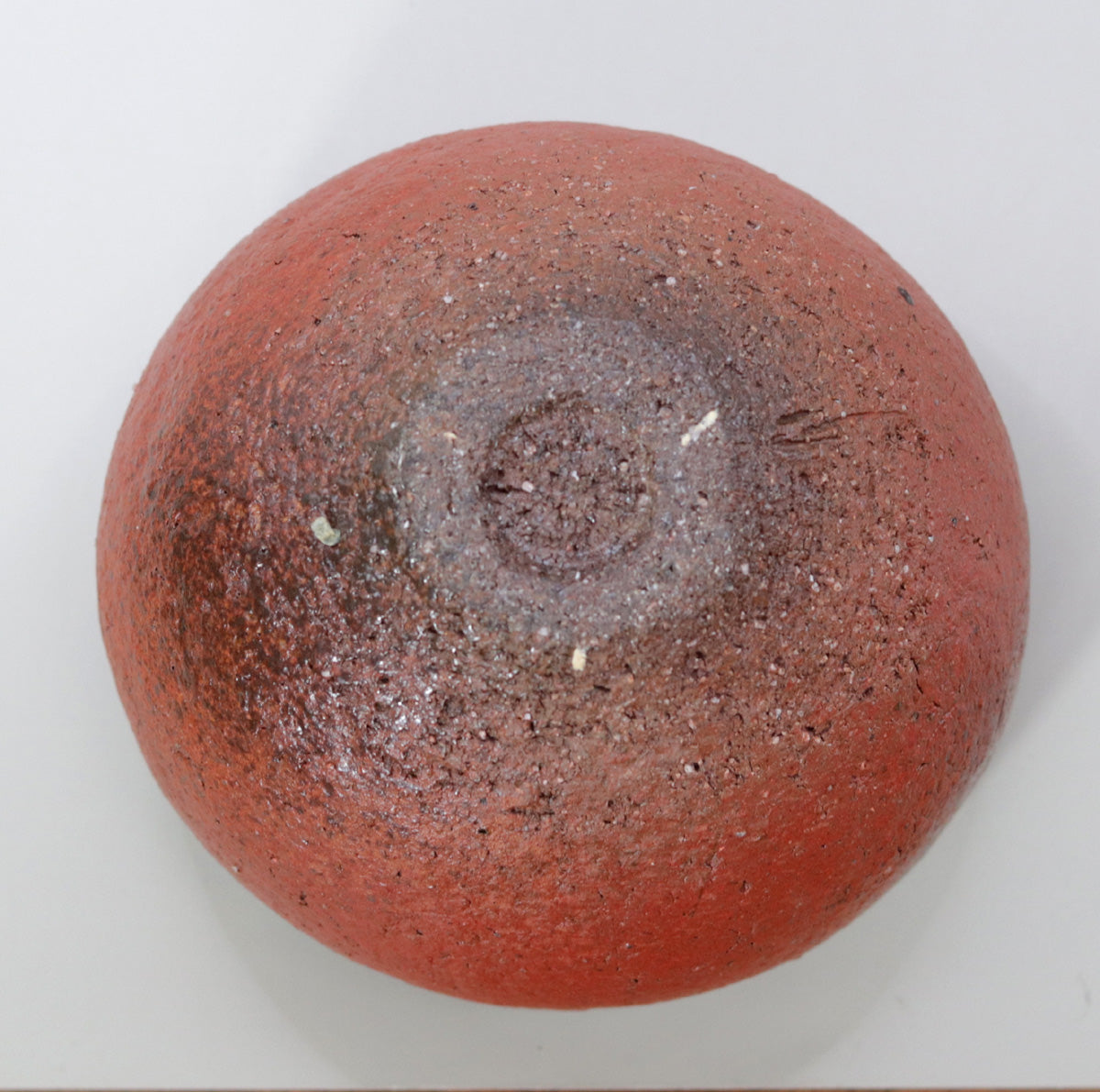Tanba Red Tea Bowl Nishitan Masashi
Tanba Red Tea Bowl Nishitan Masashi
Couldn't load pickup availability
Width: 13.4cm Depth: 12.3cm Height: 10.2cm
1. Deep crimson color - the color that appears when the iron breathes
The deep red that envelops this piece was achieved through a two-stage firing process: the rough clay from Tanba is infused with a large amount of iron, and the piece is first fired to a dark brown color using a strong reduction process, and then the atmosphere shifts to an oxidizing one towards the end. The pure scarlet color is created by capturing the "fleeting oxidation" that occurs when the embers shift direction even slightly. The fine iron particles remaining in the ceramic body maintain a matte texture, creating an appearance that combines rustic charm and refinement.
2. The soft, spherical shape and wavy rim are reminiscent of an eggshell.
The bowl is shaped like a slightly high-waisted egg, converging gently towards the inside with a gentle curve. The rim is not cut in a single line on the potter's wheel, but is gently pushed back with the fingers to create a slight unevenness that makes it soft to the touch. This fluctuation relieves the tension of the all-red color and adds a warm rhythm to the tea ceremony.
3. The jet black glaze on the interior walls creates a complementary color effect.
A thick layer of iron glaze flows over the inside, giving it a lustrous, black sheen. The contrast between the scarlet exterior and the black interior creates a vibrant interplay of green, red, and black when matcha is poured into the pot. When light tea is poured, the white foam stands out against the red rim, while when dark tea is poured, the deep brown blends with the black glaze, creating a mysterious and profound atmosphere like a bonfire on an autumn night.
4. The remains of the base material on the plateau - the memory of the earth
The base is modestly cut and unglazed, deliberately exposing the reddish-brown color of the Tanba clay. Ash that adheres during firing turns it a faint blue-gray, creating a landscape reminiscent of geological strata at the border with the scarlet color. The quartz grains and feldspar veins visible here are testament to the minerals nurtured by the Tanba mountains and fields, and give the vessel a quiet breath of life.
5. Functional beauty as tea ceremony utensils
The thin body is lightweight, yet has excellent strength and heat retention due to being precisely fired at high temperatures. The wide opening allows for easy movement of the chasen tea whisk and makes it easy to adjust the froth, making it suitable for both thin and thick tea. The low base also ensures stability on the table and goes well with modern tableware.
6. The spirit of Tanba Aka combines wabi and gaiety
Red is a color that originally symbolizes "yang," but this piece's matte texture and fine iron flecks reduce its flashiness, harmonizing with the spirit of wabi-cha tea. Nishibata Tadashi said, "The red of Tamba is a mirror that simultaneously reflects the brilliance of the flame and the simplicity of the earth," and chose a design that minimizes decoration to make the most of the earth's natural beauty.
7. The luster and shading develop over time
The red exterior will absorb the oils from your hands and develop a soft luster as you use it. The black glaze on the interior will deepen its dull metallic luster as it blends with the tea stains, and although it does not have any crazing, the color will have a gentle gradation. Over time, the boundary between the red and black will blend together, creating a unique look that is unique to the owner, which is another joy that can only be enjoyed with this piece.
The scarlet veil drawn by the embers and the Tanba red tea bowl that embodies the memory of the earth - this is the crystallization of a quiet flame, woven together by Nishibata Tadashi's reliable technique and the power of nature. We hope you will treasure this piece for a long time and enjoy the color that deepens over the years as the red breathes.
Tadashi Nishibata Biography
Born on February 24, 1948. Started making pottery in 1969. 1976. Hyogo Prefectural Exhibition Encouragement Award. 1986. Selected for the Japan Traditional Crafts Exhibition for the first time. 1988. Selected for the Japan Traditional Crafts Exhibition. Japan Traditional Crafts Exhibition. Japan Crafts Association President's Award. 1989. Selected for the Japan Ceramic Art Exhibition. Nogawa Memorial Award, Handon no Kai. 1991. Selected for the Japan Traditional Crafts Exhibition. Selected for the Japan Ceramic Art Exhibition. Grand Prize at the Tea Ceremony Forms Exhibition. 1992. Selected for the Japan Traditional Crafts Exhibition. Excellence Award at the Tea Ceremony Forms Exhibition. Hyogo Prefecture Emerging Artist Encouragement Award. Invited to exhibit at the NHK-sponsored Paris - 100 Contemporary Japanese Ceramics Exhibition. Excellence Award at the Tea Ceremony Forms Exhibition. 1993. Selected for the Japan Traditional Crafts Exhibition. Solo exhibition at Sogo Hiroshima store. Kyoto Chemin. 1994. Selected for the Japan Traditional Crafts Exhibition. Solo exhibition at Nihonbashi Mitsukoshi Main Store. 1995. Selected for the Japan Traditional Crafts Exhibition. Solo exhibition at Sogo Hiroshima store. 1996. Selected for the Japan Traditional Crafts Exhibition. Awarded the Excellence Award at the Tea Ceremony Design Exhibition, solo exhibition at Nihonbashi Mitsukoshi Main Store
1997 Encouragement Award at the Tea Ceremony Design Exhibition 1998 Selected for the Japan Traditional Crafts Exhibition Solo exhibition at Mitsukoshi Nihonbashi Main Store Selected for the Japan Traditional Crafts Exhibition 2000 Solo exhibition at Mitsukoshi Nihonbashi Main Store Solo exhibition at Mitsukoshi Fukuoka 2001 Selected for the Japan Traditional Crafts Exhibition 2002 Solo exhibition at Mitsukoshi Nihonbashi Main Store Solo exhibition at Gallery Dojima 2003 Solo exhibition at Touchingston, USA 2004 Grand Prize at the Tea Ceremony Design Exhibition at Sogo Hiroshima 2005 Exhibited at the Akashi City Museum of Culture and Hyogo Ceramics Exhibition Purchase of Akadobedai, Hyogo Ceramic Art Museum Solo exhibition at Gallery Dojima, Mitsukoshi Nihonbashi Main Store 2006 Grand Prize at the Tea Ceremony Design Exhibition Selected for the Japan Traditional Crafts Exhibition at the Museum of Fine Arts, Boston and the New York Japan Society Gallery Solo exhibition at Yokohama Takashimaya Touchingston, USA Father and Son Exhibition at Matsuyama Takashimaya Toshunkai Exhibition, Sogo Yokohama. Encouragement Award at the Tea Ceremony Art Exhibition. Selected for the Japan Traditional Crafts Exhibition in 2008. Selected for the Japan Traditional Crafts Exhibition. Solo Exhibition, Yokohama Takashimaya, Mitsukoshi Nihombashi, Santa Fe, Touchingston, USA. Toshunkai Exhibition, Funabashi, Seibu, Sogo Hiroshima. Invited to the Japanese Ceramics Exhibition in 2009. Solo Exhibition, Gallery Dojima, Sendai Mitsukoshi, 2010. Sogo Kobe. Exhibited in the Musee Tomo Grand Prize Exhibition, Contemporary Tea. Solo Exhibition, Yokohama Takashimaya, Touchingston, USA. Invited to the Japanese Ceramics Exhibition. Solo Exhibition, Joan B. Marvis, New York, USA. Invited to the Japanese Ceramics Exhibition in 2013. Exhibited in the "Contemporary Famous Bowls" exhibition at the Musee Tomo, Kanmi Kikuchi Memorial. Solo Exhibition, Mitsukoshi Nihombashi, Santa Fe, Touchingston, USA. Gallery Miyazaki, Sogo Kobe, Chiba Sogo, 2014. Solo Exhibition, Mitsukoshi Nihombashi, 2015. Received the Hyogo Prefecture Cultural Award in 2016. Exhibited at Higashihiroshima City Museum of Art for "Ceramics that Color Our Lives - Food Ware" Exhibited at Joan B. Marvis' 40th Anniversary Exhibition in 2017.
2018 Solo Exhibition at Nihonbashi Mitsukoshi Main Store
Share








Multi-Column
-
[I will send it to you quickly and carefully]
We carefully package each product in a way that suits it best.
Also, delivery times vary depending on the piece (vessel, etc.).
Items that already come with a box will be shipped within 1-3 days of the order date.
For items that require a box to be made after your order, it will take approximately 30 days for production to be completed and then shipped.
In either case, once we have confirmed your order, we will contact you by email to inform you of the delivery date.
-
[Requests when purchasing pottery]
Even products that look the same may differ slightly in color, shape, size, etc.
The way the glaze is used, the power of the kiln, the firing method, the season, and the humidity also affect the appearance of the pottery.
Please understand the individuality of each piece of pottery and enjoy the unique warmth of handmade.

